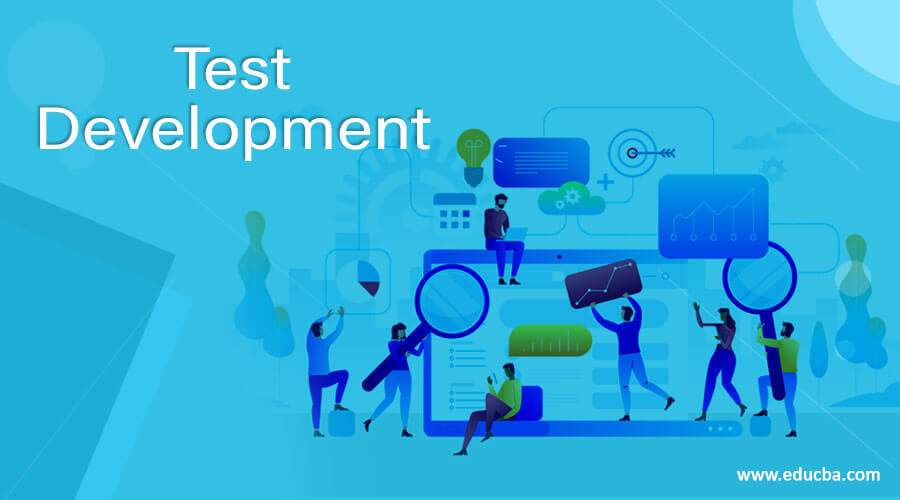Updated April 17, 2023
Introduction to Test Development
Test development is the process where various test cases are designed to execute the testing for the software or product. Test development consists of various steps, where the requirements are gathered for the product or software, based on requirements, the design and document are made, then the implementation process starts. During implementation, various tests are carried out to ensure the functionality of the product. For example, unit testing, components testing, integration testing, etc. In the end, the final test is driven to test the system as a whole. In this article, we are going to discuss this test development in detail with process management.
Test development process
In this section, we are going to discuss the process of test development.
1. Formality of Test Documentation
Testing may be performed with varying degrees of formality. Formal testing would have extensive documentation that is well controlled and would expect the documented details of the tests to include the exact and specific input and expected outcome of the test. Informal testing does not have documentation at all; individual testers kept some notes. Testers are excepted to have in their minds and notes some idea of what they intended to test and what they expected the outcome to be. The right level of formality depends on the context. For example, a commercial safety application has very different requirements than the stand-alone application that only a few people are using for a short period of time.
The level of formality is also influenced by the organization, its culture, the people working there, maturity of the development process, maturity of the testing process, tester, etc. The thoroughness of the test Documentation also depends on time constraints, deadlines, excessive pressure, good documentation, etc.
2. Test Analysis: Identifying test conditions
Test Analysis is nothing but a process of looking at something that can be used to derive test information. It can be anything like system requirements, code, technical information, business requirements, design model. Sometimes testing is based on the user’s knowledge and experience also. The test condition is something that can be tested. For example, if we need the requirement specification, then the table of contents is our initial list of the condition. If we need coverage of code decisions, then the code is our initial list of the condition.
Test conditions that are being used during the test process depend on the test strategy or test approach. For example, they might be based on the risk in the project, models designed for the system, expert’s advice, compliance. Choosing the right test condition will result in the success of the project. Choosing the wrong test condition will fail the project. Test conditions should be able to be linked back to their source on a test basis, which is called traceability. In other words, we can say that the ability to identify the related items in documentation and software, such as requirements with associated tests, is called traceability. Traceability can be either horizontal or vertical.
3. Test design: Specifying test cases
Test cases can be documented as described in the IEEE 829 standard for the test documentation. The most important aspect of the test is that it can assess that the system does what it is supposed to do. To know the system requirements, we need to have the source of information about the behavior of the system. Once a given input value has been chosen, the tester needs to determine the excepted result corresponding to the input value. Once both are decided, the tester needs to document it while it will act as a part of the test case. The expected result includes the information regarding the input value, which is displayed on the screen in response to an input entered by the user. It also includes changes to data or state or any other consequences of the test.
The testers must predict the expected result before the execution of the test. Later based on the result, an assessment is done to test the working of the software. In addition to the expected result, the test case also specifies the test environment and other things that need to be done before the test execution and after the test execution completion.
4. Test implementation: Specifying the test procedures or scripts
The next step is to gather all test cases sequentially to execute them and specify the sequential steps needed to run the test. Some test cases need to be run in a particular sequence. For example, test cases that may create new records, amend that new record, and then delete it. These tests need to be run in the correct order. Test procedures is a document that describes the steps that need to be taken in running a set of tests. It is referred to as test scripts. Test scripts can be manual for the test that needs to run manually or automated test tools for the test that needs to be automated. After that, test procedures are formed into a test execution schedule. A test execution schedule is a scheme for the execution of the test procedures. It is Specifying which test needs to be run first, or we can say that it decided the sequence of tests to be run in a sequence manner.
Recommended Articles
This is a guide to Test Development. Here we discuss the test development in detail with step by step process management. You may also have a look at the following articles to learn more –



